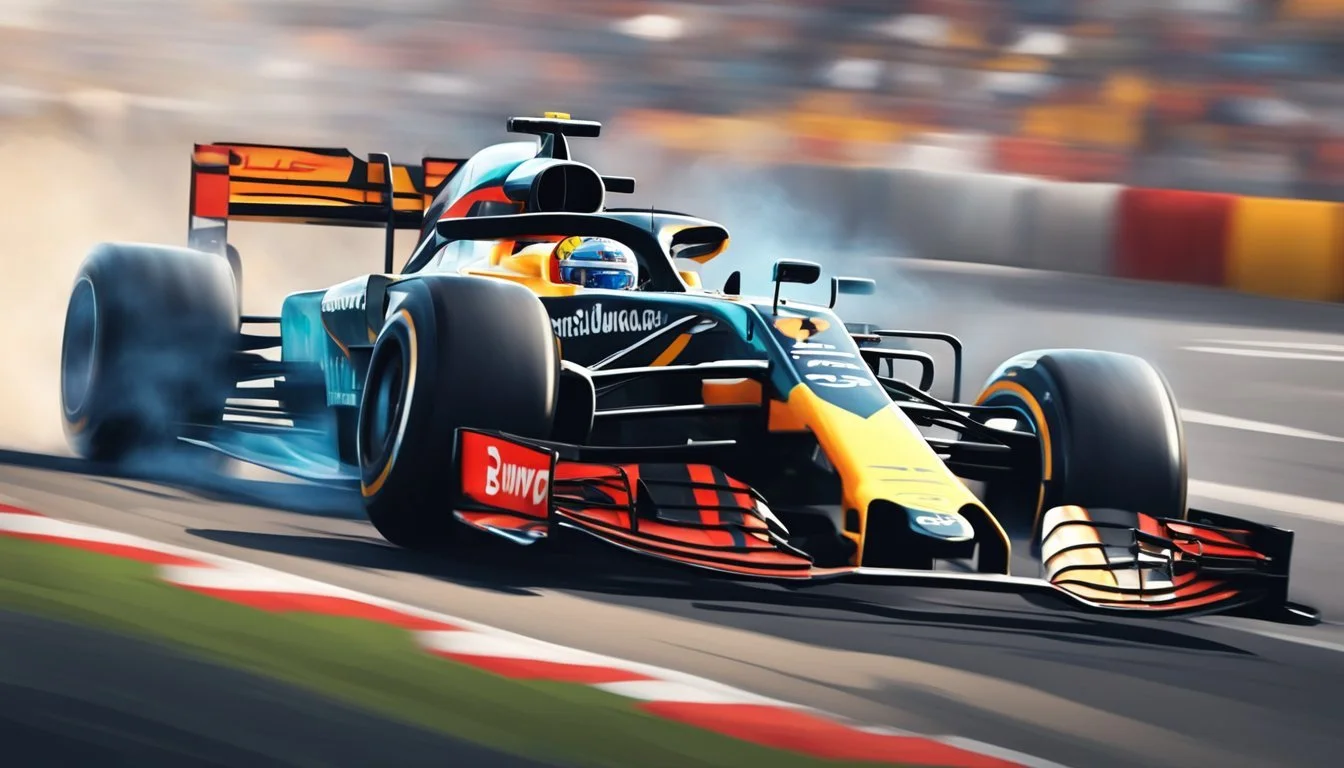The Carnivore Diet for Formula 1 Drivers
Enhancing Focus and Reflex Speeds
The physical demands of Formula 1 racing require drivers to maintain peak physical condition and mental acuity. To enhance focus, reaction times, and stamina, some drivers explore various dietary strategies. The carnivore diet, characterized by its exclusive emphasis on animal products and the exclusion of plant-based foods, is a topic of interest in the high-stakes world of F1 racing. Proponents argue that such a diet can lead to improved concentration and sharper reflexes—key elements for success on the track.
The carnivore diet for Formula 1 drivers is predicated on the belief that the high protein and fat content can sustain energy levels, reduce inflammation, and sharpen cognitive functions. It stands as a stark contrast to traditional dietary recommendations that typically include a balance of macronutrients, including carbohydrates. However, given the intense physical strain that drivers endure during races, nutrition plans are highly tailored and meticulously managed to ensure that drivers can perform at their optimal level.
As teams scrutinize every variable that can impact a driver's performance, the diet inevitably becomes a focal point of discussion. While there is no one-size-fits-all approach to nutrition in Formula 1, the effectiveness of the carnivore diet is an intriguing subject. It invites further investigation into how dietary choices affect the physiological and psychological conditions necessary for a driver to thrive amidst the relentless pressures of Formula 1 competition.
Understanding the Carnivore Diet
The carnivore diet is an all-animal product dietary approach embraced by some for its simplicity and purported health benefits. It focuses primarily on meat and excludes plant-based foods.
Core Principles of the Carnivore Diet
The core of the carnivore diet is the consumption of animal-based foods exclusively. Key components of this diet are meat, eggs, and high-fat dairy products. Staple food items include red meat, which is a rich source of protein and fat, as well as fish, chicken, pork, and organ meats. Followers typically eliminate vegetables, fruits, grains, and other plant-derived foods, focusing on high-protein and fat content for energy and nutrition.
Benefits and Challenges for F1 Drivers
For Formula 1 drivers, whose professions require sharp concentration and quick reflexes, a diet high in protein and fats may aid in muscle mass maintenance and strength, potentially assisting in fatigue reduction and quicker recovery. However, the lack of carbohydrates can pose a challenge, as they are a primary energy source needed for the high-intensity nature of racing. Hydration and electrolyte balance are also crucial for drivers, which can be harder to manage on the carnivore diet due to the absence of fruits and certain vegetables containing vital electrolytes.
Comparison with Other Diets
Unlike diets that allow a broad range of foods like the Mediterranean or vegan diets, the carnivore diet is restrictive, focusing solely on animal products. Other diets often include a balance of carbohydrates, fats, and proteins, along with a variety of vitamins, minerals, and fiber from fruits, vegetables, and grains. In contrast, the carnivore diet is centered on high-protein and fat intake with zero-carb philosophy, which may contrast with the nutritional strategies traditionally recommended for high-performance athletes.
Nutritional Balance and Risks
The carnivore diet raises questions regarding nutritional balance and potential risks due to its restrictive nature. While red meat and eggs provide a concentrated source of nutrients, the absence of plant-based foods means a low intake of dietary fiber and certain vitamins and minerals. Long-term adherence to the diet could also increase the risk of inflammation-induced illness and might not provide the diverse nutrition necessary for optimal health and performance for F1 drivers.
Physical Demands of Formula 1 Driving
Formula 1 driving tests the limits of human performance, requiring drivers to maintain superior fitness levels across various domains, including strength to withstand intense G-forces, cardiovascular health for endurance, and precise weight management for peak physical condition.
The Impact of G-Forces
Formula 1 drivers are subjected to extreme G-forces, comparable to those experienced by astronauts during launch. These forces demand that drivers have exceptionally strong neck muscles and core stability to maintain control of the vehicle and prevent injury. Training programs often include exercises specifically designed to enhance the strength of the neck muscles and core, which are crucial for withstanding G-forces that can exceed 5g during cornering, braking, and acceleration.
Cardiovascular and Strength Training
Cardiovascular endurance and muscle strength are fundamental for a Formula 1 driver's fitness. They undergo rigorous cardio routines, such as cycling and running, to build stamina. Strength training is also critical, though it focuses on optimizing strength-to-weight ratio rather than bulking up. Drivers engage in diverse exercises targeting core and neck areas, as well as overall muscle endurance, to prepare for the physical demands of racing without excessively increasing muscle mass.
Conditioning and Weight Management
Maintaining a specific body weight is imperative due to Formula 1 regulations on the minimum weight of the car and driver combined. Drivers work closely with nutritionists to ensure their diet supports lean muscle development while managing fat levels. Weight management is a delicate balance — drivers aim to remain as light as possible without compromising on the strength and stamina needed for peak performance. Regular conditioning exercises, tailored dietary plans, and continual monitoring of body composition are integral parts of a Formula 1 driver's regimen.
Dietary Implementation for Performance
In the high-octane world of Formula 1 racing, precision in dietary implementation is as crucial for performance as the engineering of the cars themselves. Drivers' diets are meticulously planned to ensure they maintain optimal concentration and quick reflexes.
Meal Planning Strategies
Formula 1 drivers focus on including meals that are high in protein and complex carbohydrates to sustain their energy levels throughout the day. Breakfast might consist of oatmeal, yogurt, berries, and nuts to provide a balanced intake of fibers, proteins, and antioxidants. For lunch, lean protein such as grilled chicken or fish accompanied by quinoa or brown rice ensures a steady release of energy, while dinner may include salmon for omega-3 fatty acids, sweet potato for vitamins, and green vegetables for essential minerals.
Hydration and Fluid Management
Effective fluid management is vital. Drivers consume ample water and fluids that contain electrolytes to replenish those lost through intense physical exertion. On race day, hydration starts early to prevent dehydration, which can impair focus and reaction times. Regular sipping on water and specialized hydration formulas helps maintain their performance.
Supplementation and Recovery Foods
Post-race and training, drivers employ supplementation to aid recovery and reduce inflammation. Protein shakes and snacks rich in antioxidants—like berries and nuts—are consumed promptly for muscle repair. Foods such as avocado for healthy fats, seeds for their anti-inflammatory properties, and salmon for protein and recovery-enhancing nutrients form part of their recovery diet.
Race Preparation and Recovery
In the high-octane world of Formula 1, drivers' race preparation and recovery strategies are as critical as their handling of the car. Successful performance hinges on meticulous nutritional planning for energy provision and post-race protocols to support healing and rest.
Pre-Race Nutritional Strategies
Formula 1 drivers focus on a diet rich in carbohydrates and proteins during race week for optimal performance. Carbohydrates come from sources such as oats, quinoa, brown rice, and pasta, providing the necessary fuel for concentration and quick reflexes. For example, a typical breakfast might include:
Greek yogurt mixed with oats, nuts, and seeds.
A serving of honey or fruit to supply glucose for immediate energy.
Proteins support muscle endurance and are sourced from lean meats, poultry, fish, or plant-based options like lentils. Fats are not the primary fuel source but are included in moderation for overall health.
Proper hydration is paramount, with drivers consuming ample water, sometimes with the addition of electrolytes. Caffeine, often from coffee, is used strategically for its stimulant properties, improving alertness.
Post-Race Recovery and Healing
After the race, the driver's body requires rest and nutrients for recovery. Rapid weight loss during a race, primarily through fluid loss, necessitates immediate rehydration. An effective recovery meal should aim to replenish spent energy stores and assist in muscular repair. It could look like:
A high-protein source, such as grilled chicken or fish, to initiate muscle repair.
Carbohydrate-rich foods like brown rice or pasta to restore glycogen levels.
Consistent sleep patterns and ample rest are essential to allow the body to heal. Drivers often engage in physio sessions to prevent injuries and aid in muscle recovery, ensuring they remain in peak condition for the demands of racing.
Race preparation and recovery for Formula 1 drivers is an intricate interplay between diet, fitness, and rest—each element calibrated for peak performance and swift recuperation.
Tailoring the Diet to the Driver's Needs
In Formula 1, where precision and endurance are paramount, a driver's diet must be meticulously customized. Nutrition plays a crucial role in maintaining their concentration, reflexes, and physical condition throughout demanding race conditions.
Personalizing Macronutrient Ratios
F1 drivers require an optimal balance of macronutrients: proteins, fats, and carbohydrates, tailored to their individual bodies and metabolic rates. Protein is fundamental for muscle repair and growth, particularly proficient from lean meats and fish. Fats are essential for hormone production and energy; however, their intake must be regulated to avoid excessive weight gain. Carbohydrates act as the main energy source, with an emphasis on complex varieties, like quinoa and brown rice, to prevent spikes in blood sugar levels.
Protein: Chicken, fish, eggs
Fat: Nuts, seeds, avocados
Carbohydrates: Brown rice, quinoa, vegetables
Adjusting for Training Cycle Phases
The F1 calendar, with its competitive season and off-season, requires distinct nutritional strategies. During the off-season, drivers focus on building strength and conditioning. Macronutrient intake, especially proteins and carbohydrates, is increased to support muscle growth and repair. As race season approaches, the focus shifts to maintain endurance and stability, with a reduced calorie intake that compliments intensified cardio work without compromising muscle mass.
Off-season: Higher calorie intake for strength
Race season: Managed calorie intake for endurance
Considering Individual Health and Fitness Goals
Each driver's health and fitness goals necessitate a bespoke approach. Some may prioritize core strength and stability, while others might focus on the endurance of their back and leg muscles. Flexibility and body composition are also critical as they directly impact the driver's ability to handle the physical demands of the car. Collaborating with nutritionists and fitness coaches, F1 drivers ensure their diet aligns with these specific fitness objectives.
Core strength/stability: Targeted exercises and corresponding nutrition
Endurance: Balanced energy sources for prolonged periods
Flexibility: Dietary support for lean muscle mass
By aligning their diet with individual needs, F1 drivers support their quest for optimal performance.
Profiles of F1 Drivers' Nutrition Habits
Formula 1 drivers' diets are precisely tailored to enhance their performance. Nutrition plans focus on optimizing concentration and reflexes, vital to their success on the track.
Lewis Hamilton's Plant-Based Approach
Lewis Hamilton, a prominent figure in F1, has adopted a vegan diet, ensuring that his nutrition supports peak physical performance without compromising on ethical values. His diet mainly consists of plant-based proteins, complex carbohydrates, and healthy fats to maintain energy levels and muscular health.
Protein Sources: Legumes, tofu, tempeh
Carbohydrates: Whole grains, vegetables
Fats: Nuts, seeds, avocados
Daniel Ricciardo's Balanced Nutrition Plan
Daniel Ricciardo emphasizes a balanced approach to his diet, allowing for a mix of lean protein, whole grain carbohydrates, and essential fats. His plan is designed to keep energy high and to sustain him through the grueling demands of a race.
Protein: Fish, chicken
Carbohydrates: Quinoa, brown rice
Fats: Olive oil, nuts
When it comes to getting the best deals, buying olive oil online is the way to go!
Nico Rosberg and Valtteri Bottas: A Comparative Study
Nico Rosberg and Valtteri Bottas have both been observed for their differing dietary disciplines within F1. Rosberg's diet was more regimented, focusing on high protein, low carbohydrate intake to maintain weight and muscle mass. Bottas's diet, on the other hand, leans towards a balance, similar to Ricciardo, ensuring steady energy supply.
Rosberg's Protein: Lean meats
Rosberg's Low Carbs: Leafy greens, low-sugar fruits
Bottas's Balanced Diet: Similar protein sources as Rosberg, with moderate carbs such as sweet potatoes
Each driver's nutritional profile is bespoke, crafted to their physiological needs and the demands of the sport, showing the critical role that diet plays in achieving the pinnacle of F1 racing performance.
Living the Life of a Formula 1 Driver
The life of a Formula 1 driver is a rigorous blend of strict dietary regimens, constant travel, and intensive physical training, all designed to ensure peak performance behind the wheel.
Daily Routines and Dietary Patterns
Formula 1 drivers begin their day focused on nutrition that promotes concentration and quick reflexes. Breakfast typically includes protein-rich foods like eggs or Greek yogurt mixed with oats, nuts, and seeds, providing sustained energy without a spike in blood sugar levels. Lunch, consumed a few hours before racing, is light and composed of lean proteins such as chicken or fish, alongside complex carbohydrates from sources like vegetables, quinoa, or brown rice. Dinner often follows suit, prioritizing balance and nutrient density with a similar composition to lunch. Between meals, drivers may snack on fruits, nuts, and salad to maintain energy.
Travel and Coping with Jet Lag
F1 drivers often cross multiple time zones, which can disrupt sleep patterns and peak performance. They combat jet lag by adjusting their meal timings and sleep schedules ahead of travel. Hydrating and choosing meals rich in protein and vegetables help in resetting their internal clocks more rapidly. Consistent sleep schedules and strategic naps are also crucial in managing jet lag symptoms effectively.
Physical Training and Body Maintenance
Physical training for an F1 driver is tailored to enhance strength and endurance. They engage in a mix of strength training, including deadlifts, and cardio work to maintain a high level of fitness. Their regimen comprises exercise sessions focused on core stability, neck strength, and reflexes—attributes vital for enduring the G-forces experienced in racing. Recovery is equally important, featuring rest days, stretching, and hydration to ensure muscles are rejuvenated and ready for the physical demands of racing.
Conclusion
A specialized diet is integral for Formula 1 drivers to maintain high levels of concentration and quick reflexes. The Carnivore Diet, centered on animal products, provides an abundance of proteins and fats, essential for sustained energy and cognitive function.
In the demanding world of F1, a driver’s nutrition strategy must support intense physical exertion and mental sharpness. Adaptations can be made within the carnivorous framework to meet individual micronutrient needs and fluid balance, crucial for their athletic performance.
The selection of foods within this diet should aim to:
Maximize energy: through quality fats and proteins found in meats and fish.
Support muscle recovery: with sufficient protein intake post-race and workout.
Ensure hydration: despite the diet's low carbohydrate content, electrolyte balance is vital due to the high fluid loss during races.
While the Carnivore Diet may represent an unconventional approach within the diverse dietary strategies of F1 drivers, it is imperative that any nutrition plan is tailored to the unique physiological and professional demands of the sport. Each driver should consult with a sports nutritionist to ensure their diet contributes positively to their overall performance and well-being on the track.










